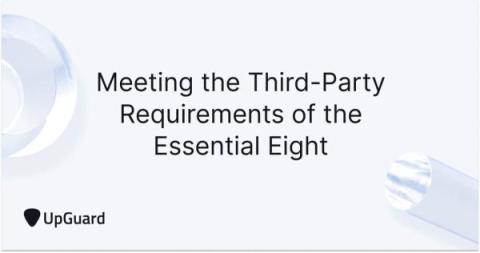Security | Threat Detection | Cyberattacks | DevSecOps | Compliance
Latest News
New from SEC: Cybersecurity Final Rule on Reporting Hits Third Party Risk
DORA: A paradigm shift in cybersecurity and operational resilience
Building a Cyber-Resilient Future Together
Last week in New York, I had the opportunity to attend a panel discussion hosted by SINET and moderated by Upendra Mardikar, the Chief Information Security Officer of TIAA. We discussed everything from security in DevOps, to AI’s pros and cons, and cybersecurity’s future. As long as the attack surface, API usage, and digital footprints increase, so will cyber risk.
Regulatory Compliance 101: What You Need To Know
Understanding the Cost of Legal Consultation
SEC Regulations: What is a "Material" Cybersecurity Incident?
Understanding GDPR Vendor Management and Compliance for your Business
General Data Protection Regulation (GDPR) is a framework for data protection that gives strict obligations for organizations within the European Union. For many businesses, understanding and implementing GDPR vendor management is a daunting task. That’s why we are going to break down what GDPR vendor management is, who is involved in it, and what the requirements are.
4 best GDPR Compliance Gap Assessment Tools
The GDPR compliance has the most rigorous privacy policies and security laws. It’s origin is in the EU. However, every cloud-hosted company has to comply with it to conduct business with EU citizens.
Exploring the DORA: Key Takeaways from the New EU Financial Sector Risk Regulation
When asked why he robbed banks, Willie Sutton, one of the first fugitives named to the U.S. FBI’s most wanted list, reportedly replied, “Because that’s where the money is.” As any infosec professional working for a financial institution can tell you, loads of cybercriminals will likely agree with that sentiment. Banks and similar organizations are no stranger to cyber threats.











